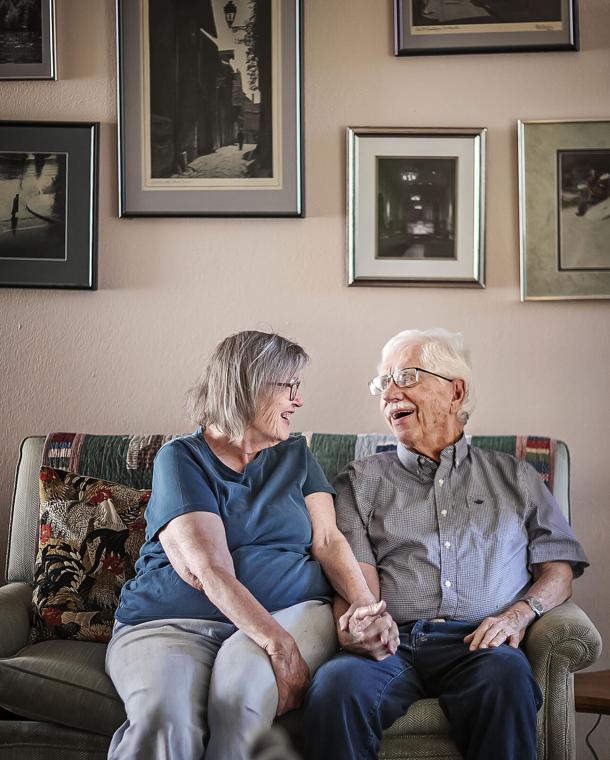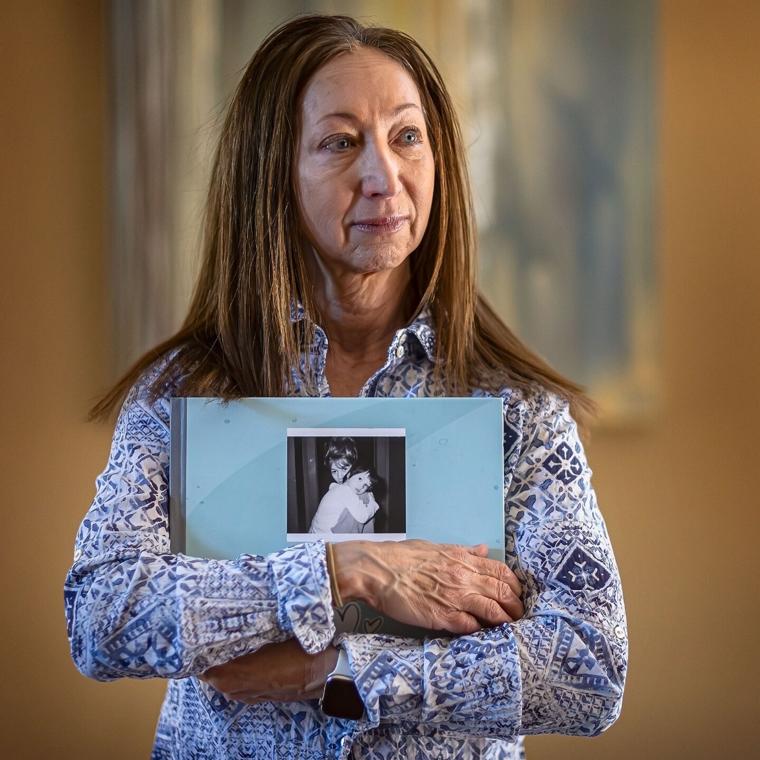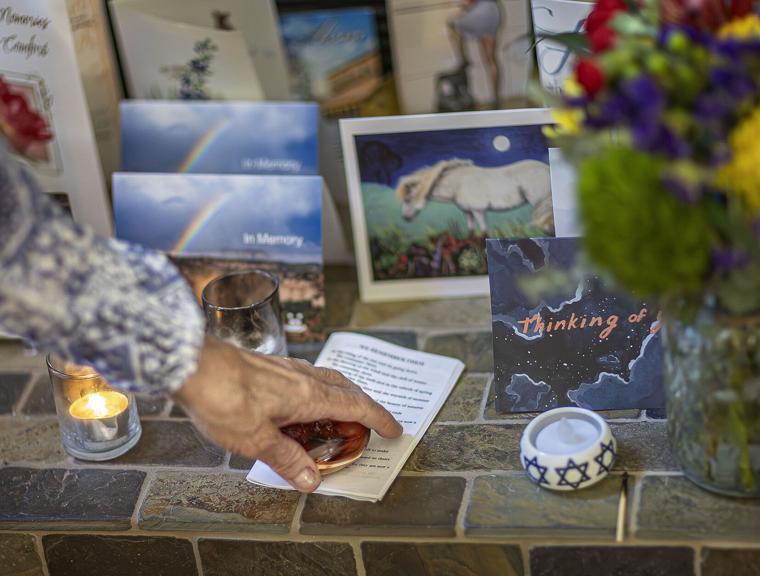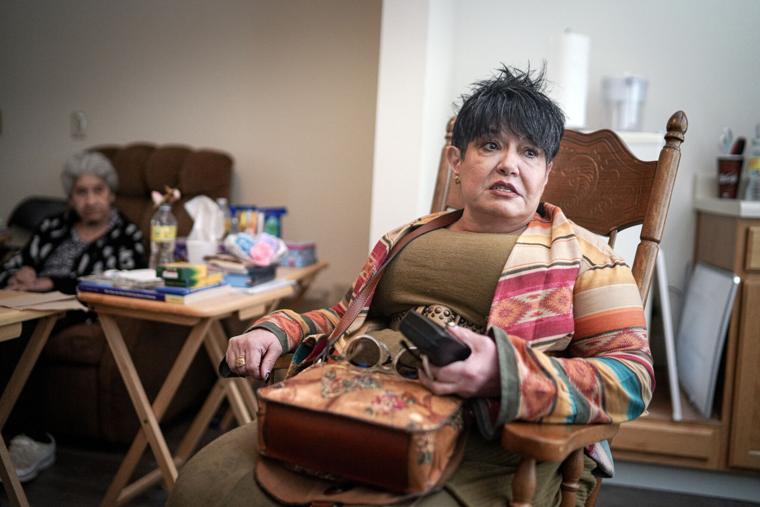'They're not making it easy for our elderly': N.M. families struggle to find affordable, quality memory care
By Gabrielle Porter
Managing a loved one’s dementia can be a painful process.
For someone in Santa Fe whose relative or spouse has reached a stage at which they need long-term residential care, that process is getting tougher all the time.
“I started calling the different places, and some of them were as expensive as $10,500 per month,” said Santa Fe resident Margaret Acton, who recently had to find a new home for her mother, a former resident of the troubled Pacifica Senior Living center. She had to move out recently when the facility shut down for renovations.
Kay Anders, a 77-year-old Santa Fe resident, tried for a while to find an assisted living center where she could live with her husband, Peter Anders — one with a memory care unit that could serve her husband when his dementia advances and he needs more help.
Eventually, she gave up.
“It’s the expense,” Kay Anders said. “It was hard to find someplace that would really meet our needs, and I just decided I didn’t want to move.”
Rising costs, limited availability and concerns about the quality of long-term residential care can pose major problems for people with dementia and other memory issues, not in just in Santa Fe but across New Mexico — a vast state with far-flung communities and a rapidly aging, low-income population. Compounding the problem, a rising number of facilities are closing.
The shutdown at Pacifica — which alerted its 32 assisted living and memory care residents in early April they would need to relocate by May 9 — is temporary. But the company that operates the center on Galisteo Road is considering shifting its mission after the massive renovation project, creating independent living apartments for people 55 and older and eliminating much-needed memory care beds.
Former residents have described the facility as problem-plagued and understaffed — but also one of the most affordable options in the city for assisted living and residential memory care.
Jen Paul Schroer, the state’s Cabinet secretary of aging and long-term services, said the dearth of long-term care facilities throughout the state is particularly troublesome in rural areas.
“Since 2020 we have seen over 10% of our facilities close,” Paul Schroer said. “If we have facilities in rural areas close, then that means family members are being put in facilities hours away, which means, most likely, they’re not being visited as often as they like.”
The trend is occurring nationwide, affecting skilled nursing homes as well as less-regulated assisted living centers, which often include memory care units. Health care website Skilled Nursing News reported last fall on fears that nursing home closures across the country are expanding “nursing home deserts,” heavily affecting small, rural communities. The news organization McKnights Senior Living recently reported financial challenges that stem from the coronavirus pandemic have driven many of the closures.
Shutdowns come against the backdrop of an increasingly elderly population. That’s particularly true in Santa Fe County, where about 27.6% of residents are 65 or older, according to the most recent U.S. census estimates. That compares with a national average of 17.3% and a statewide average of 19.1%.
Paul Schroer said her department is trying to understand what’s accelerating the trend of closures in New Mexico and is in the process of hiring a contractor to take a deep dive into assisted living and nursing facilities to “really understand what the issues are.”
That research will begin in the new fiscal year, which starts July 1, a department spokesperson said.
High costs for care
For New Mexico families shopping for memory care facilities, the sticker shock is real.
Medicare only covers skilled nursing services, not the more basic care provided in assisted living facilities. And while some supports do exist, like the Medicaid home and community-based waiver program, David Davis, executive director of the Memory Care Alliance in Santa Fe, said families in his experience typically pay out of pocket for memory care unless they have long-term care insurance.
“You’re looking at $7,500-ish in Santa Fe for memory care,” Davis said. “So if you don’t have the money for residential care, that’s off the table.”
Carol Carpenter, the daughter of another former Pacifica resident, said she looked at facilities for her mother in Santa Fe, where Carpenter lives, and in Dallas and Portland, Ore., where her brothers live. Her mother has dementia but didn’t live in the memory care unit. They chose The Legacy at Santa Fe, where living costs only went up about $700 or $800 from the roughly $4,900 monthly she was paying for a one-bedroom apartment at Pacifica — a “great deal,” Carpenter said.
“ ‘Affordable’ is such a subjective term,” she added. “I think for an average Santa Fean, almost nothing’s affordable. ... [But] there’s no question that Santa Fe was far more affordable than [Dallas and Portland].”
Acton eventually went with MorningStar of Santa Fe for her mother, 86-year-old Eloisa Bustos. The facility is not far from the intersection of St. Michael’s Drive and St. Francis Drive. Her mother’s studio apartment at MorningStar costs $6,500 per month, Acton said — a stark contrast with the $4,500 per month she was paying for the two-bedroom unit at Pacifica.
“This was the next lowest [after Pacifica],” Acton said. “But it’s a really nice facility.”
Acton said she believes eight people transferred from Pacifica to MorningStar, and she knows others had to move farther afield.
“A lot of these people had to move their families out of state or to Albuquerque and Las Cruces,” she said.
The costs are a real problem for people seeking a home with memory care, she added.
“We need to have a cap on what they can charge for these places,” she said. “How do they expect a senior citizen to afford a place? … They’re not making it easy for our elderly.”
Acton said she and her husband don’t plan to keep her mother in a facility long term. They’re hoping she can eventually move back into her own home in the historic South Capitol neighborhood — but not without some accessibility retrofitting. And that’s expensive.
“It’s a fortress of steps to get into everything,” Acton said. She’s been looking for programs to help with the costs, but “everything has stipulations.”
“My mom barely makes $2,400 a month,” she said, adding she’s had to borrow money for the renovations and her husband, a former Santa Fe fire chief, has started working again as a paramedic to help cover the costs.
“There shouldn’t be so much red tape to help the people that really need the help,” she said.
Regulations lacking
Some people have raised concerns about regulations for assisted living facilities, which are far lighter than those placed on nursing homes.
Assisted living centers in New Mexico, even those that have memory care services, are not required by law to have medical staff, although regulations require them to maintain certain staffing levels, according to the New Mexico Administrative Code.
Staff members who help residents take their medication have to undergo a state-approved training program, and the state requires assessments of memory care residents conducted by a registered nurse, a nurse practitioner or a physician assistant within 15 days before their admission.
The federal government doesn’t oversee assisted living facilities.
Many memory care patients don’t need advanced nursing care. Still, some families believe the state should toughen regulations.
“The regulations should really be altered to address the memory care community,” said Dena Ducane, a 58-year-old Santa Fe resident whose mother died in March in a memory care unit that’s part of a local assisted living facility.
Her mother, Rhoda Dobrovich, a dementia patient, was seizing and convulsing, Ducane said, while the medication that might have saved her sat locked in a cabinet. There was no medication technician at the facility at the time to unlock the cabinet and administer the drug.
It took about 90 minutes for a staff member to find a key, Ducane said.
“It was just horrible to watch,” she said. “She should not have had to suffer that way in the end.”
Ducane said she views New Mexico’s regulation of memory care facilities is woefully inadequate and lacking proper penalties.
The New Mexico Department of Health, which oversees congregate care centers, didn’t comment Friday on concerns about the level of state oversight of residential memory care.
Several representatives of local long-term care facilities and an industry association leader did not respond to requests for interviews.
When a complaint is submitted to the Department of Health, staff from the agency’s Division of Health Improvement visits the facility for an inspection and writes a report about any deficiencies found.
The facility then has 10 days to submit a plan of correction, according to information previously provided by department.
The state will make an unannounced visit to the site to determine if it is in compliance.
Ducane said in her experience, the whole process can take months.
“It takes too long for them to get in there,” she said. “By this time, the resident could have passed away.”
The lack of meaningful penalties also is a problem, Ducane said.
“Once they do come in, really all that’s asked of the facility is to write a corrective action plan,” she said. “That plan gets submitted and it gets put in a binder and then nothing changes. ... It’s just theater.”
She said she’d like to see New Mexico enact laws more like those in Arizona. Lawmakers in that state recently approved legislation to strengthen standards and create greater oversight of long-term assisted living facilities, as well as increase the fines those facilities have to pay for negligence, according to a report in the Tucson Sentinel.
“I wish we had appropriate regulations on these facilities with substantial penalties, which would definitely end all the neglect and the abuse,” Ducane said. “Then families could have some peace of mind.”
Acton said she agrees the standards for assisted living facilities should be higher.
“I think that there should be stricter regulations for assisted living facilities,” Acton said. “They should have to meet a certain criteria.”
Paul Schroer said the upcoming state study will examine regulations and policy recommendations.
“If the regulation swings too far, then there can be concerns around it even being a viable model,” she said. “However, I think a lot of the power is with the families that have loved ones [in assisted living facilities]. And I think that everyone should have expectations that their loved ones are safe.”
Staff writer Carina Julig contributed to this report.






en
2024-05-26T05:45:00.0000000Z
2024-05-26T05:45:00.0000000Z